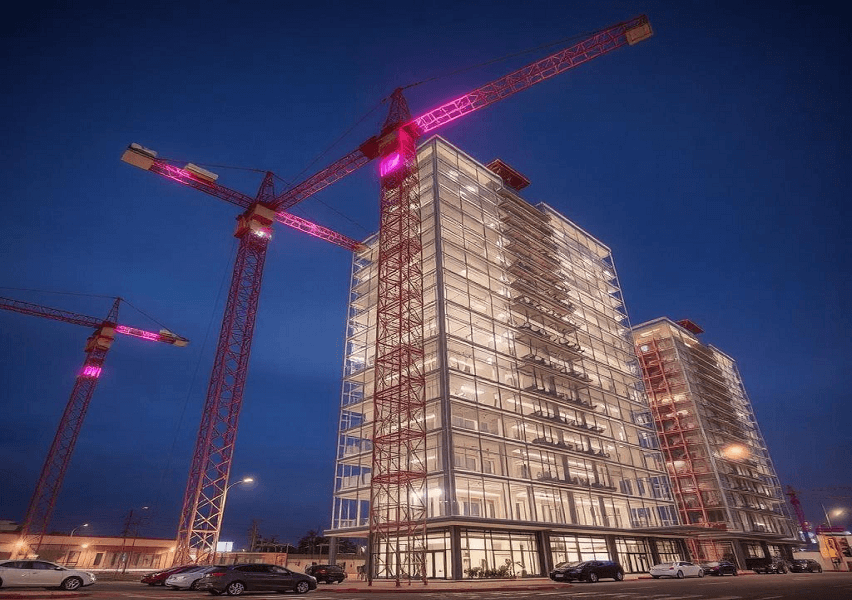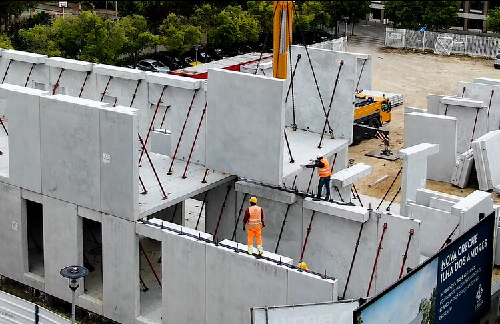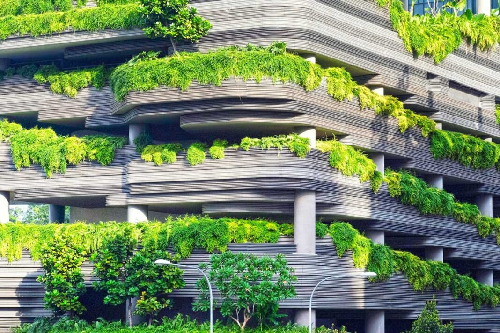
Commercial Real Estate Sector: An Introduction
The real estate sector is an important driver of the Indian Economy and provides major revenue to the exchequer. The government initiatives in the last few decades have ensured that the property market has grown enormously.
This growth has also helped the commercial property market and new techniques have evolved in the last two decades that have revolutionized the overall realty industry.
India's commercial construction sector is evolving rapidly, driven by advancements in technology, materials, and methods. These innovations are enhancing efficiency, sustainability, and cost-effectiveness.
Below are some key techniques reshaping commercial construction in the country:
________________________________________
PRECAST AND MODULAR CONSTRUCTION

- What It Is: Precast components are manufactured off-site and assembled on-site.
- Benefits
- Faster construction timelines.
- Reduced waste and environmental impact.
- Consistent quality due to factory-controlled conditions.
- Example: IT parks in Bengaluru have widely adopted modular construction for rapid deployment.
________________________________________
- BUILDING INFORMATION MODELING (BIM)
- What It Is: A digital representation of the building process that integrates design, construction, and operational data.
- Benefits:
- Improved collaboration among stakeholders.
- Early detection of design clashes, reducing rework.
- Enhanced project management and cost control.
- Example: High-rise commercial buildings in Mumbai are leveraging BIM for complex designs.
________________________________________
GREEN BUILDING TECHNOLOGIES

- What It Is: Sustainable construction techniques focused on energy efficiency and environmental conservation.
- Benefits:
- Reduced operational costs through energy savings.
- Enhanced indoor air quality for occupants.
- Popular Practices
- Use of energy-efficient HVAC systems.
- Solar panels and rainwater harvesting systems.
- Certification from IGBC (Indian Green Building Council) or LEED.
________________________________________
- HIGH-STRENGTH CONCRETE AND ADVANCED MATERIALS
- What It Is: Use of innovative materials like ultra-high-performance concrete (UHPC) and self-healing concrete.
- Benefits:
- Increased structural durability and lifespan.
- Lower maintenance costs.
- Example: Smart cities and commercial hubs like Gurugram are incorporating high-strength materials for skyscrapers.
________________________________________
- 3D PRINTING IN CONSTRUCTION
- What It Is: Layer-by-layer construction using 3D printers to create building components.
- Benefits:
- Rapid prototyping and construction.
- Precise customization of designs.
- Reduced material waste.
- Example: India’s first 3D-printed commercial office in Bengaluru showcases this emerging trend.
________________________________________
- SMART BUILDING TECHNOLOGY
- What It Is: Integration of IoT-enabled systems for efficient building management.
- Benefits:
- Real-time monitoring of energy usage and maintenance needs.
- Enhanced security with smart access controls and surveillance.
- Example: Smart commercial buildings in Hyderabad use IoT for optimizing energy and operational costs.
________________________________________
- LIGHTWEIGHT STEEL AND COMPOSITE STRUCTURES
- What It Is: Use of steel and composite materials for structural frameworks.
- Benefits:
- Reduced construction time due to prefabrication.
- Flexibility in design for large-span structures.
- Example: Commercial malls and multiplexes in Delhi-NCR are adopting steel-based construction.
________________________________________
- GEOPOLYMER AND FLY ASH-BASED MATERIALS
- What It Is: Use of industrial by-products like fly ash and slag for creating eco-friendly construction materials.
- Benefits:
- Lower carbon footprint.
- Cost savings on raw materials.
- Example: Many commercial projects in Gujarat incorporate fly ash bricks and geopolymer concrete.
________________________________________
- DRONE TECHNOLOGY IN CONSTRUCTION
- What It Is: Use of drones for site surveys, progress monitoring, and safety inspections.
- Benefits:
- Accurate and real-time site data.
- Improved safety by reducing manual inspections in hazardous areas.
- Example: Major commercial developments in Pune are utilizing drones for large-scale projects.
________________________________________
- ADAPTIVE REUSE AND RETROFITTING
- What It Is: Repurposing old structures or upgrading them to meet modern needs.
- Benefits:
- Cost-effective compared to new construction.
- Preservation of cultural and architectural heritage.
- Example: Adaptive reuse of heritage properties in South Mumbai for commercial spaces.
________________________________________
Conclusion: The adoption of these innovative techniques is driving India's commercial construction sector towards greater efficiency, sustainability, and resilience. As the industry continues to evolve, such advancements will be crucial in meeting the demands of urbanization and global competitiveness.


